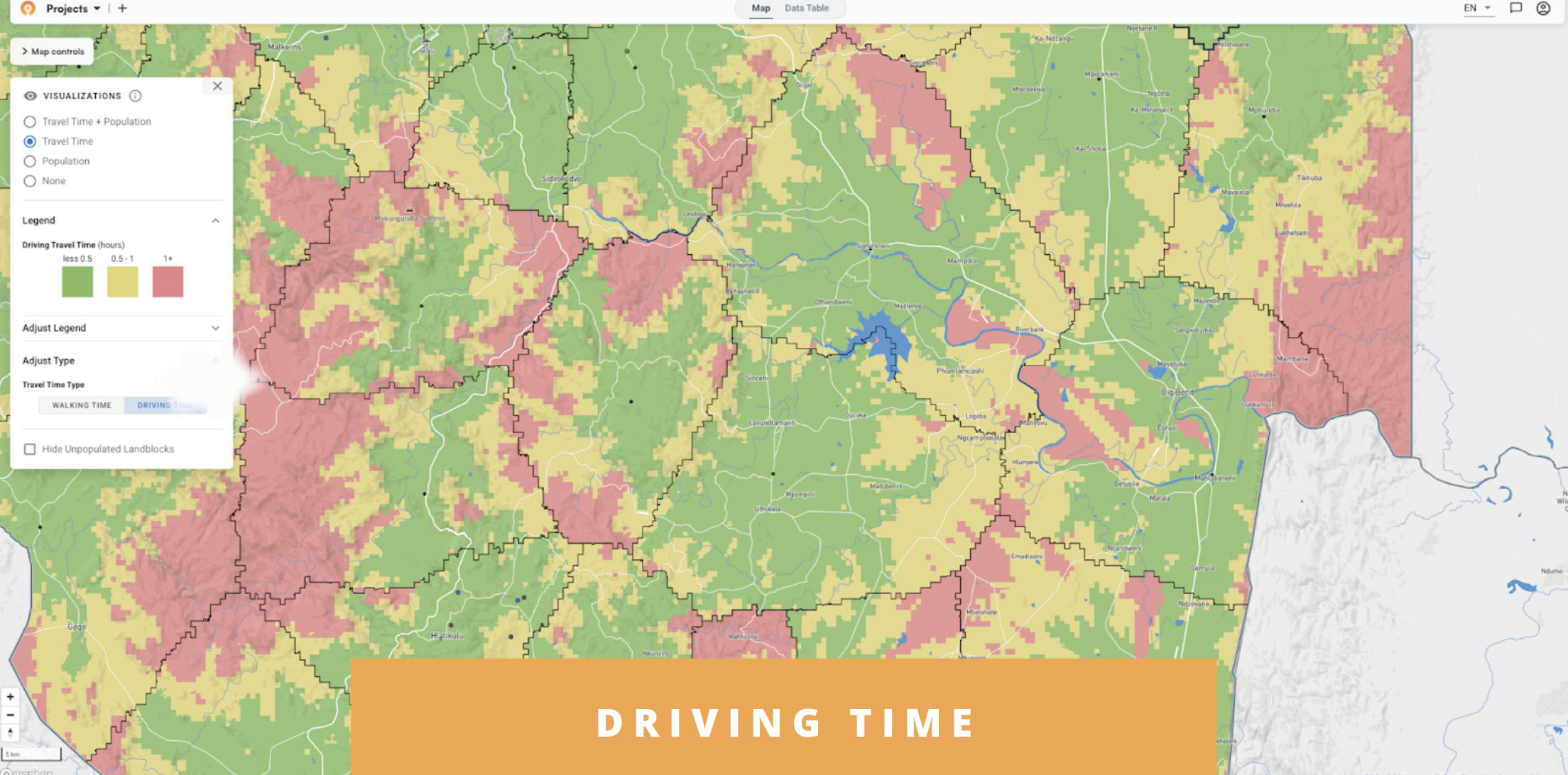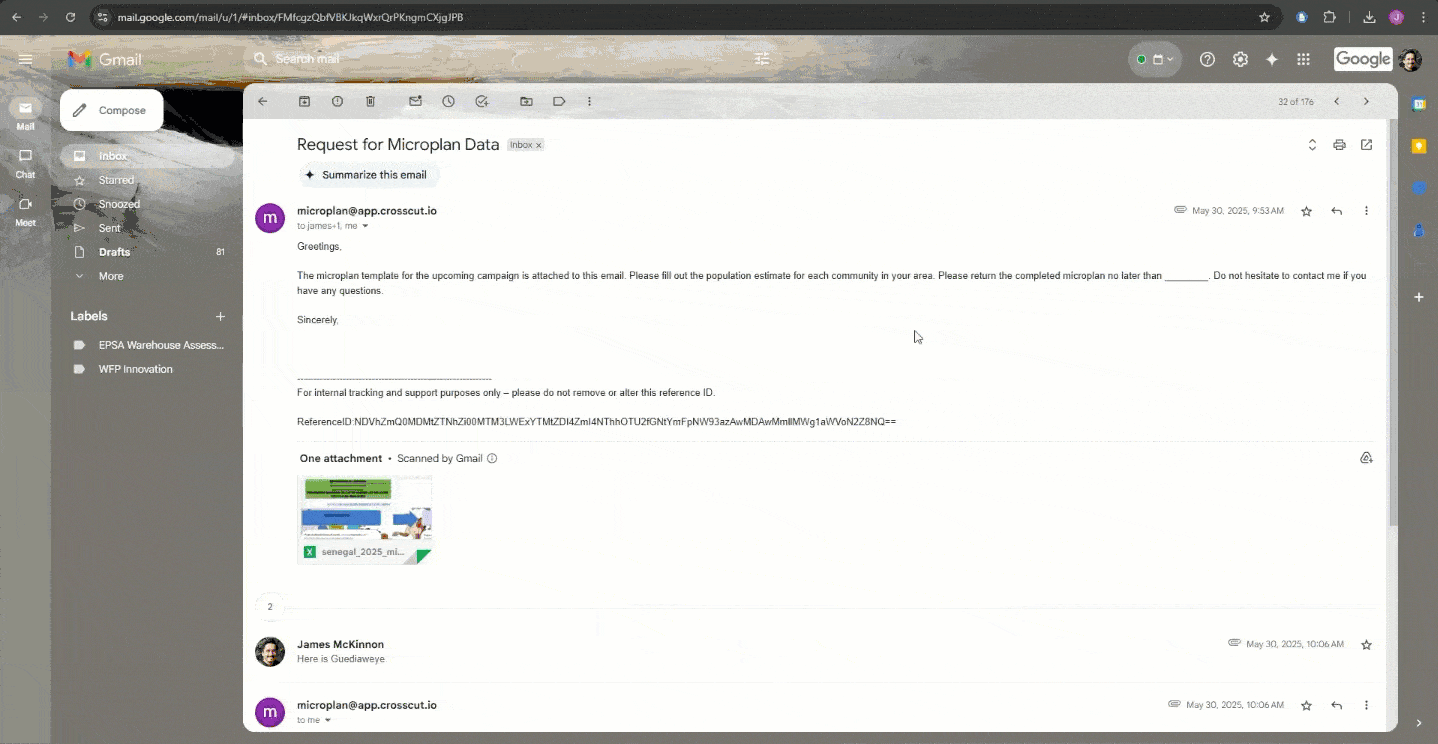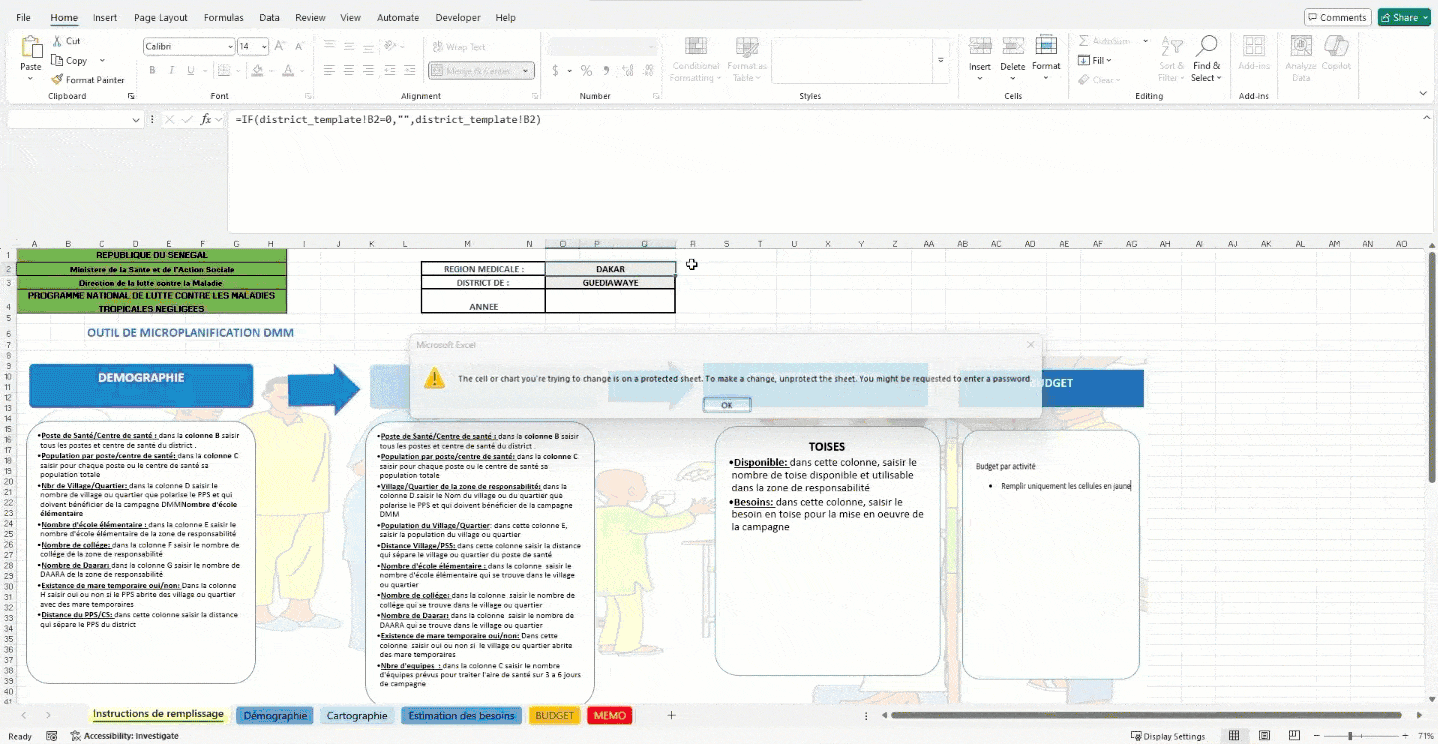Customizing Senegal's Microplanning Template

When Senegal's health ministry needed to streamline their health campaign planning, they wanted to keep using the existing Excel-based template they had used for years. This document had become much more than a simple data collection tool. The template represented their entire microplanning workflow and their local field teams knew it inside and out.
The problem was that these planners at the central level had to manually distribute the template, track responses, and consolidate dozens of Excel files returned via email. Doing all of this by hand leads to delays, version control issues, and errors that slow down campaigns.
The Crosscut App allowed the Senegal team to continue using their own template with which they were familiar while still benefiting from the time-saving aspects of using the Microplan Collector – a feature within the Crosscut App that automates Excel-based data collection workflows.
The value of preserving familiar workflows
There’s no easy way to keep everyone in sync during mass drug administration (MDA) campaigns. Senegal's template technique had evolved over years of real-world use to adapt to their needs, with tabs for demographics, village mapping, needs estimation, and budget calculations.

The template embodied everything their team knew about organizing national campaigns. District-level field teams knew exactly how to navigate between the demographic setup, village cartography, and supply calculations. So when they asked about customizing the Microplan Collector, their number one priority was sticking with what worked.
It's exciting for us because this is exactly why microplanning exists – to capture local field knowledge that satellite data and algorithms can't provide.
The technical solution at a glance
Working with Senegal's team, we identified three main technical modifications. The overall focus was automating manual tasks and eliminating administrative grunt work – without new training or steep learning curves.
Before this update, users had to select a region from a dropdown, then choose a district, then manually populate health posts before entering village-level data. While functional and easy enough to maintain, setup took a lot of time and introduced plenty of room for errors, such as pasting village populations twice or deleting cells unknowingly. You can easily undo these mistakes initially but they snowball into bigger problems when left unchecked.

Our solution eliminated these clunky setup steps entirely. Instead of sending identical templates to all districts, the Microplan Collector automatically generated unique versions for each district, pre-populated with the correct information and health post listings. Field teams get ready-to-use templates while managers eliminate distribution overhead.
Let’s look at how these modifications address specific problems Senegal's planning team faced.
How the customization works
Now when district teams receive their microplanning request via email from the planning director, they download a template that's already customized for their specific area.

Rather than requiring district teams to select regions and districts from dropdowns, we automatically insert this information based on the recipient. For example, below the region "DAKAR" and district "GUEDIAWAYE" are locked in place for field teams, preventing confusion and eliminating selection errors.
The original template required users to enter all the health posts in their district by hand. Our system now extracts this information from Senegal's health facility database (imported once during initial project setup) and automatically populates it for each district. Planning directors can then send each district a template with their specific health posts already listed.
Finally, all the administrative information feeds from a hidden "district_template" sheet that connects to our mapping system. This backend integration allows Excel formulas throughout the template to function exactly as before. The big difference now is that it lets our system automatically extract and consolidate data when templates are returned.

These modifications simplify the front-end user experience, but the bigger challenge tends to happen later, for planning directors that need to manage all of this incoming data.
Streamlining with automated data management
National planning teams face a big challenge when responses start flooding back in from the field. Traditional microplanning approaches often involve manually consolidating dozens of these Excel files, a process prone to errors and version control issues. That's where our free technology comes in.

Using the Microplan Collector, district teams can easily submit their completed templates and the system will track status in real-time, even providing multiple export options when data collection is complete.

The national planning team can then download individual files, consolidate all responses into a single spreadsheet, or generate comprehensive supply calculations across all districts.

At this point, the exported data maintains all the original formulas and calculations that teams were already using. District teams don’t need to use drop down menus to get set up, and scaling this to multiple districts submitting simultaneously (imagine 30 districts in a national campaign) saves planning directors days of manual file merging and error detection.
Before & after: The practical benefits
This streamlined solution delivers benefits across Senegal's health campaign planning:
- Fewer errors through pre-populated, locked fields that eliminate setup mistakes
- Time savings from automated aggregation that eliminates hours of manual work
- Consistent data collection across districts that enhances campaign planning
- Instant access to consolidated reports essential for logistics coordination
The technical work behind this integration happens invisibly to end users. They simply get a more efficient version of tools they already know and understand. Connecting Excel formulas to geospatial databases, automating administrative data population, and providing flexible export options can now all happen in a few clicks. Country programs face a huge amount of things to accomplish prior to the launch of an MDA. For many, being able to do microplanning quickly may make the difference whether it is able to be done at all.
Building on what exists
This customization capability extends beyond Senegal to other country programs, and even other industries altogether.
Whether your team uses WHO standard templates through the ESPEN Geospatial Microplanner (a white-label version of the Crosscut App), custom formats developed locally, or modified versions of existing tools, the Microplan Collector can adapt to your established workflows rather than replacing them.
For any organization or business managing multi-site data collection with custom templates, this custom approach offers a practical path forward. Our advisory services can help streamline your existing workflows while preserving the institutional knowledge that defines your success.
Related Posts

December 2025: App updates and WHO workshop in Brazzaville

Catchment mapping for disease campaigns: Insights from WHO AFRO's Brazzaville workshop



.png)



.JPG)

